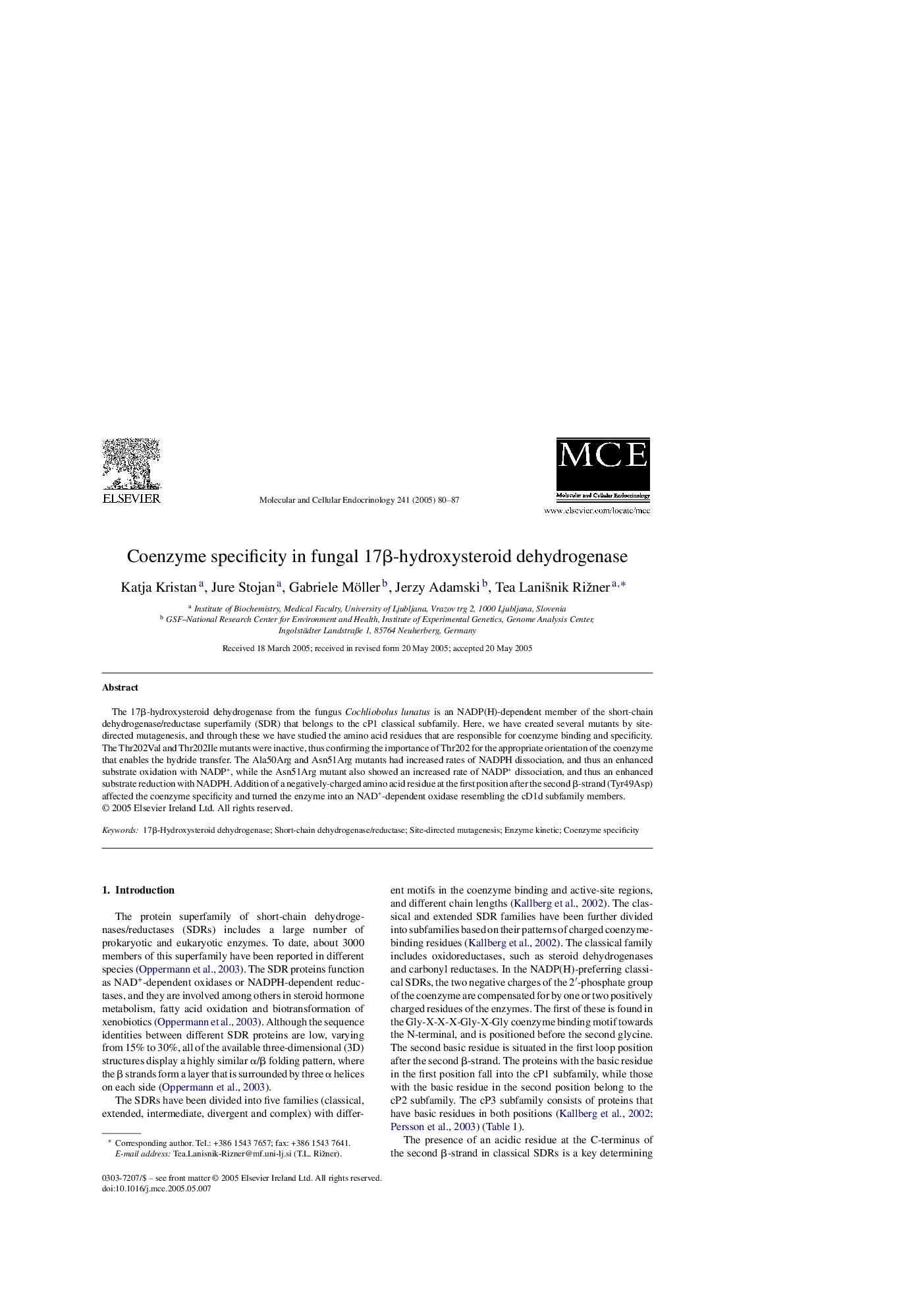| Article ID | Journal | Published Year | Pages | File Type |
|---|---|---|---|---|
| 9914921 | Molecular and Cellular Endocrinology | 2005 | 8 Pages |
Abstract
The 17β-hydroxysteroid dehydrogenase from the fungus Cochliobolus lunatus is an NADP(H)-dependent member of the short-chain dehydrogenase/reductase superfamily (SDR) that belongs to the cP1 classical subfamily. Here, we have created several mutants by site-directed mutagenesis, and through these we have studied the amino acid residues that are responsible for coenzyme binding and specificity. The Thr202Val and Thr202Ile mutants were inactive, thus confirming the importance of Thr202 for the appropriate orientation of the coenzyme that enables the hydride transfer. The Ala50Arg and Asn51Arg mutants had increased rates of NADPH dissociation, and thus an enhanced substrate oxidation with NADP+, while the Asn51Arg mutant also showed an increased rate of NADP+ dissociation, and thus an enhanced substrate reduction with NADPH. Addition of a negatively-charged amino acid residue at the first position after the second β-strand (Tyr49Asp) affected the coenzyme specificity and turned the enzyme into an NAD+-dependent oxidase resembling the cD1d subfamily members.
Keywords
Related Topics
Life Sciences
Biochemistry, Genetics and Molecular Biology
Cell Biology
Authors
Katja Kristan, Jure Stojan, Gabriele Möller, Jerzy Adamski, Tea LaniÅ¡nik Rižner,
